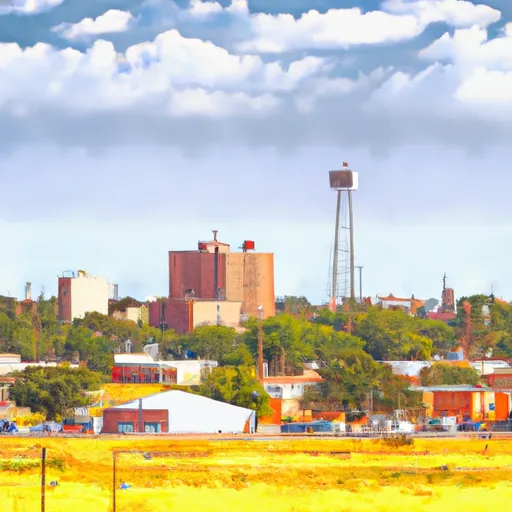-
 Snoflo Premium
Snoflo Premium
Get unlimited access to all our content
With no Ad interruptions! - Start Your Free Trial Login with existing account
Savanna
Eden Index
Climate
8.3
•
Recreation
0.3
•
Community
1.8
•
Safeguard
3.9/10

Savanna, Oklahoma is a small town located in the southeastern part of the state. It has a humid subtropical climate which is characterized by hot summers and mild winters. The average temperature in Savanna ranges from the mid-90s (Fahrenheit) in the summer to the mid-40s in the winter. The area receives approximately 45 inches of rainfall annually, with the wettest months being May and June.
Hydrologically, Savanna is situated near the Canadian River, providing access to water-based activities such as fishing and boating. The river also contributes to the town's water supply and supports local agriculture.
Outdoor recreational opportunities in Savanna are abundant. The town is surrounded by picturesque landscapes, offering opportunities for hiking, camping, and wildlife observation. Nearby Robbers Cave State Park, located just a short drive away, provides additional recreational options including rock climbing, rappelling, and horseback riding. The park's scenic trails and caves attract visitors year-round.
In summary, Savanna, Oklahoma offers a humid subtropical climate, access to the Canadian River for water-based activities, and a range of outdoor recreational opportunities including hiking, camping, and exploring Robbers Cave State Park.
What is the Eden Index?
The Snoflo Eden Index serves as a comprehensive rating system for regions, evaluating their desirability through a holistic assessment of climate health, outdoor recreation opportunities, and natural disaster risk, acknowledging the profound impact of these factors on livability and well-being.
Climate Health Indicator (CHI): 8.3
Savanna receives approximately
1120mm of rain per year,
with humidity levels near 83%
and air temperatures averaging around
17°C.
Savanna has a plant hardyness factor of
7, meaning
plants and agriculture in this region tend to thrive during the non-winter months.
By considering the ideal temperature range, reliable water supplies, clean air, and stable seasonal rain or snowpacks, the Climate Health Indicator (CHI) underscores the significance of a healthy climate as the foundation for quality living.
A healthy climate is paramount for ensuring a high quality of life and livability in a region, fostering both physical well-being and environmental harmony. This can be characterized by ideal temperatures, reliable access to water supplies, clean air, and consistent seasonal rain or snowpacks.
Weather Forecast
Streamflow Conditions
Lower Canadian
Area Rivers
Lower Canadian
Snowpack Depths
Lower Canadian
Reservoir Storage Capacity
Lower Canadian
Groundwater Levels
Recreational Opportunity Index (ROI): 0.3
The Recreational Opportunity Index (ROI) recognizes the value of outdoor recreational options, such as parks, hiking trails, camping sites, and fishing spots, while acknowledging that climate plays a pivotal role in ensuring the comfort and consistency of these experiences.
Access to outdoor recreational opportunities, encompassing activities such as parks, hiking, camping, and fishing, is crucial for overall well-being, and the climate plays a pivotal role in enabling and enhancing these experiences, ensuring that individuals can engage in nature-based activities comfortably and consistently.
Camping Areas
| Campground | Campsites | Reservations | Toilets | Showers | Elevation |
|---|---|---|---|---|---|
| Mill Creek Bay - Eufaula Lake | 12 | 623 ft | |||
| Lamar Point - Pat Mayse Lake | None | 506 ft | |||
| Johnstone Park | 6 | 670 ft | |||
| Wind Point Park | 135 | 457 ft | |||
| Murphys Meadow Military - McAlester | None | 725 ft | |||
| Lake McAlester | None | 626 ft | |||
| Arrowhead State Park | None | 619 ft | |||
| Gentry Creek Landing - Eufaula Lake | None | 607 ft | |||
| McGee Creek State Park | None | 684 ft | |||
| Lake Tawakoni State Park | 78 | 457 ft |
Nearby Fishing
Catastrophe Safeguard Index (CSI):
The Catastrophe Safeguard Index (CSI) recognizes that natural disaster risk, encompassing floods, fires, hurricanes, and tornadoes, can drastically affect safety and the overall appeal of an area.
The level of natural disaster risk in a region significantly affects safety and the overall livability, with climate change amplifying these risks by potentially increasing the frequency and intensity of events like floods, fires, hurricanes, and tornadoes, thereby posing substantial challenges to community resilience and well-being.
Community Resilience Indicator (CRI): 1.8
The Community Resilience Indicator (CRI) recognizes that education, healthcare, and socioeconomics are crucial to the well-being of a region. The CRI acknowledges the profound impact of these elements on residents' overall quality of life. By evaluating educational resources, healthcare accessibility, and economic inclusivity, the index captures the essential aspects that contribute to a thriving community, fostering resident satisfaction, equity, and social cohesion.

